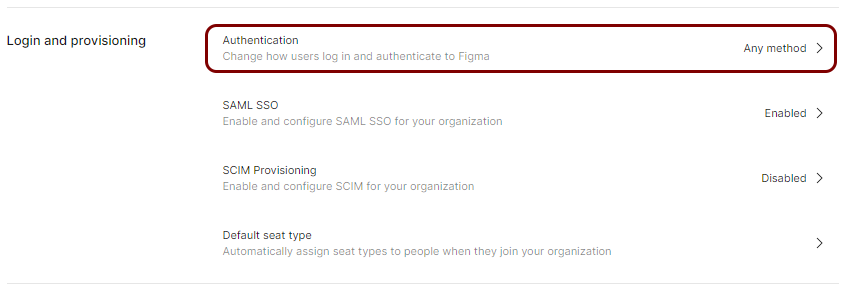Integrate Figma with Conditional Access
In this topic, you will find general instructions on how to integrate Figma with Portnox™ Conditional Access for Applications.
Create a Portnox Cloud application configuration
In this step, you will create a configuration in Portnox Cloud that will contain all the information necessary to integrate with Figma.
-
In a new tab of your browser, open your Portnox Cloud account by accessing the following URL: https://clear.portnox.com/
From now on, we will call this tab the Portnox tab.
-
In the Cloud portal top menu, click on the Applications option.

-
On the Applications screen, click on the Add application button, and
select the Add new SAML application option.

- Optional: If you have more than one SAML identity provider configured, select the identity provider in the Select an identity provider to use for this application section.
-
In the Application details section, enter an Application
name and optionally a Description.

In this example, we used the name Figma for the new application configuration but you can use any name you like.
- Keep this browser tab open. You will need it later.
Open your Figma SAML SSO setup
In this section, you will access the Figma administrative interface and find the settings for SAML single sign-on (SSO) setup.
-
In another tab of your browser, open your Figma web interface by clicking on the Log in
option on the https://www.figma.com/ page.
Then, log in to your account.
From now on, we will call this tab the Figma tab.
-
In the left-hand side menu, in the section representing your organization, click on the
Admin option.

-
In the right-hand side pane, click on the Settings tab.

-
In the Settings pane, in the Login and provisioning section, click on
the SAML SSO row.
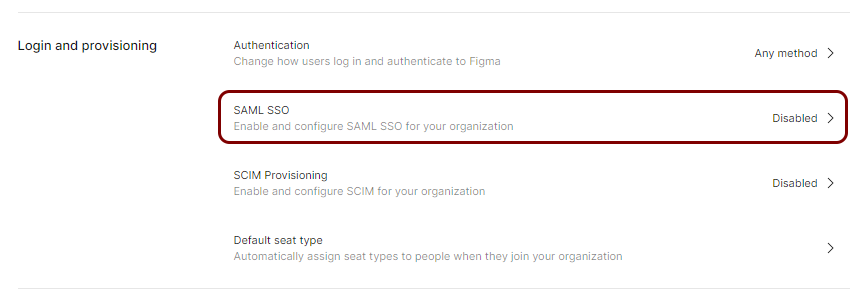
-
In the Configure SAML SSO dialog, in the Identity provider (IdP) field,
select the Other option.
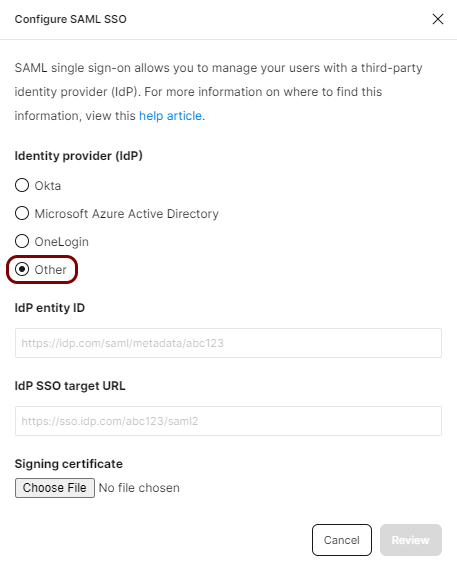
Copy configuration values from the Portnox tab to the Figma tab
In this section, you will copy the values displayed by Portnox Cloud and paste them in the relevant fields in the Figma SAML SSO setup section.
-
In the Portnox tab, in the Service details section, click on the ⧉ icon next to the Identity Provider Entity ID / Audience
URI field to copy the value.

-
In the Figma tab, click on the empty field next to the IdP entity ID label and paste the
value copied from Portnox Cloud.

-
In the Portnox tab, in the Service details section, click on the ⧉ icon next to the Sign-In URL / SSO URL field to copy the
value.

-
In the Figma tab, click on the empty field next to the IdP SSO target URL label and paste
the value copied from Portnox Cloud.
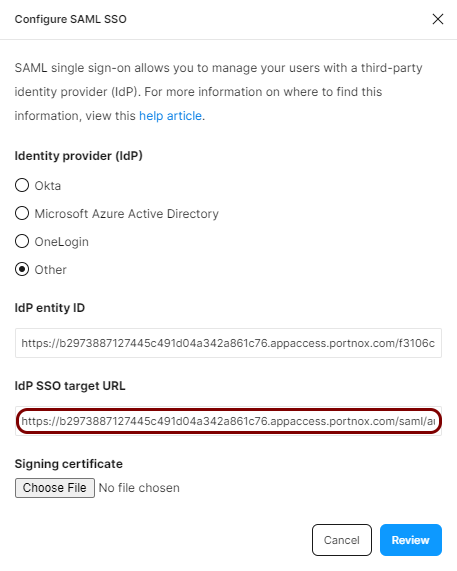
-
In the Portnox tab, in the section, click on the ⋮ icon next to the
Active certificate and select the Download certificate option to
download the certificate to the local drive.

-
In the Figma tab, click on the Choose File button under the Signing
certificate label and select the file downloaded to the local drive from Portnox Cloud.
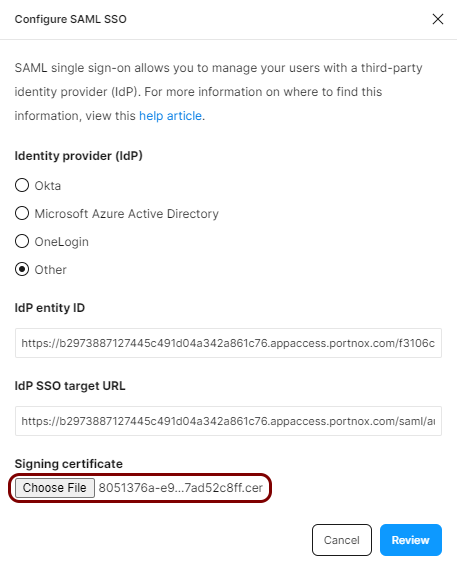
-
Click on the Review button. Then, activate the This information is
correct checkbox, and click on the Configure SAML SSO button.

Copy configuration values from the Figma tab to the Portnox tab
In this section, you will copy the values displayed in the Figma SAML SSO setup section, and paste them in the relevant fields in Portnox Cloud.
-
In the Figma tab, select the value next to the SP entity ID field and use your operating
system’s copy shortcut to copy the value to the clipboard.

-
In the Portnox tab, in the Application properties section, click on the empty field under
the Entity ID / Service Provider Entity URL heading and paste the value copied from
Figma.
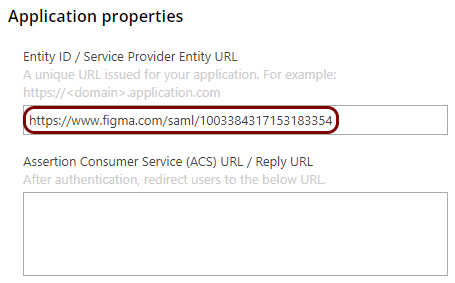
-
In the Figma tab, select the value next to the SP ACS URL field and use your operating
system’s copy shortcut to copy the value to the clipboard.

-
In the Portnox tab, in the Application properties section, click on the empty field under
the Assertion Consumer Service (ACS) URL / Reply URL heading and paste the value copied from
Figma.
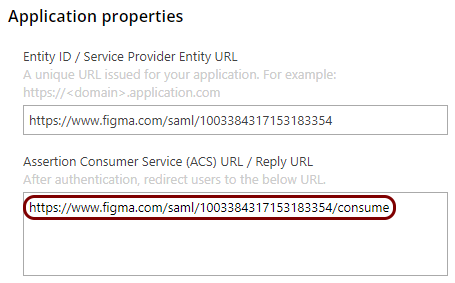
Finalize the configuration
In this section, you will finalize the configuration in Portnox Cloud and Figma.
-
Finalize the configuration in the Portnox tab
-
Finalize the configuration in the Figma tab
Result: You have configured Figma to be accessible using Portnox Conditional Access for Applications.


